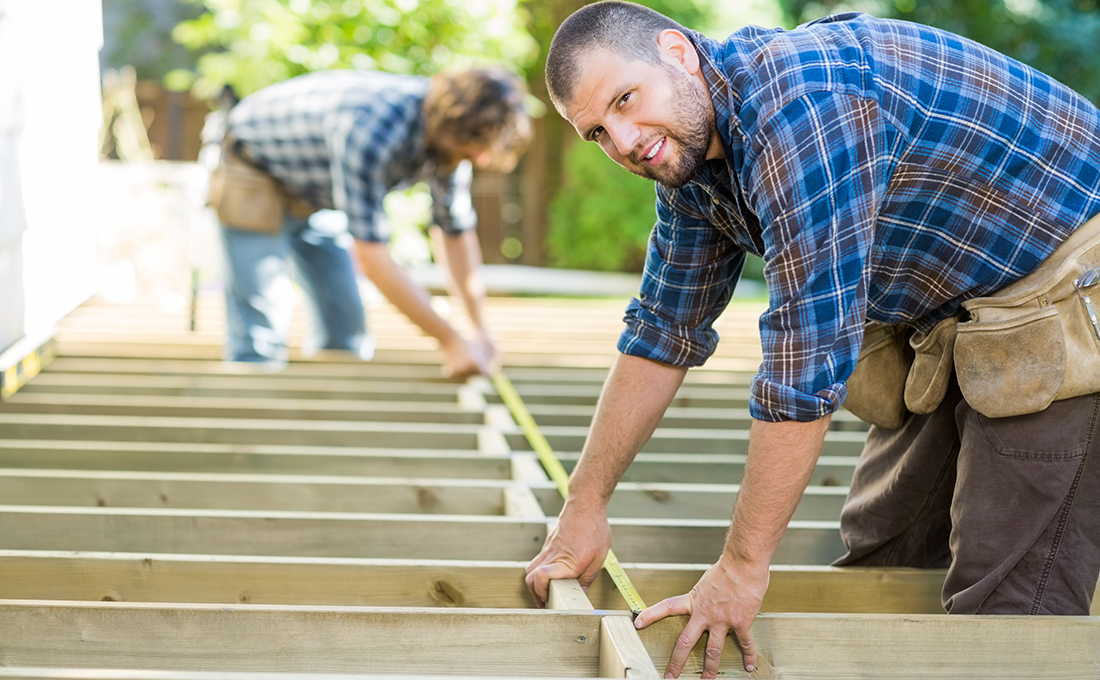
DESIGNED for BEAUTY.
MADE for LIFE.
Blog & News
The three things you need to have BEFORE you build your deck

You’ve pored over magazines, bought or borrowed a zillion books, and you have an Instagram feed filled with beautiful photos of decks. You’ve even created a detailed plan with all the components and measurements clearly spelled out. You’re ready to get started, right? Wrong. Before you build your deck, you need to check three things: building permits, rules from your homeowner association, and underground utilities.
Building permits from your local authority
Before you build your deck, you need to make sure that your deck plan fits your local building codes. Every municipality has specific building codes, and almost every one of them has specific building requirements for decks. The American Woodworking Council has an excellent guide that takes the guesswork out of building a sturdy deck. Use this as a guide for planning your deck, and it will make the approval process from your city that much easier. You also might want to read this excellent article from Fine Homebuilding that covers creating a code-compliant deck. It probably won’t surprise you that local governments move at their own pace, so allow plenty of time to submit your plans and receive the go-ahead.
Approval from your homeowners’ association
Many neighborhoods, especially those developed by a single builder, are part of a homeowners association. Homeowner Associations (HOAs) have specific rules that govern what you can and cannot do on your property, so you absolutely need to review their bylaws (often called a covenant) governing decks and other outdoor living spaces. You may want a three-level deck in your front lawn, but chances are good that your neighbors don’t, and the rules from your HOA will dictate your building plans. For more information on deck building and HOAs, check out this great article.
Clearly marked underground utilities
Picture this: you’re digging the footings (holes that hold your deck posts) with a two-person, gas-powered auger. It’s drilling into the earth like a hot knife through butter when suddenly, it wraps around a buried electrical cable, strips the insulation, and sends electricity through the large metal tool that you and a buddy are holding.
The way to avoid this kind of costly and dangerous mistake is to have utilities clearly marked before you build your deck. All kinds of utilities could be buried beneath your lawn: phone lines, water lines, sewer lines, gas lines, and the electric lines we discussed earlier.
Fortunately, there’s a simple way to identify all of these. Just call 811. 811 is a national service for identifying and marking underground utilities. Details about the service are available at 811.com.
You will need to provide them with some essential details:
- the address of where you plan to dig (they will also want to know the county that you’re in and the nearest cross street)
- the type of project you’re completing
- the exact area on the property where you’re planning to dig
It’s best to make this call at least a week before you begin your project, so there’s time for the various utilities to mark their lines.
Summary
When you’re itching to build a new deck, the last thing you want to do is wait for approval from several other organizations, but doing so will actually save you time, money, and heartache.
Want more tips on building and maintaining composite decks?
Sign up for more news from Armadillo Deck!
